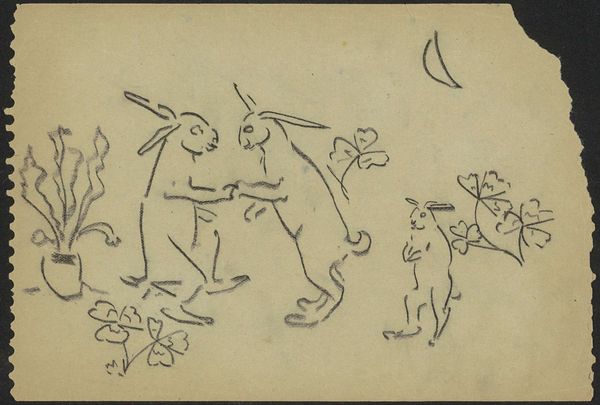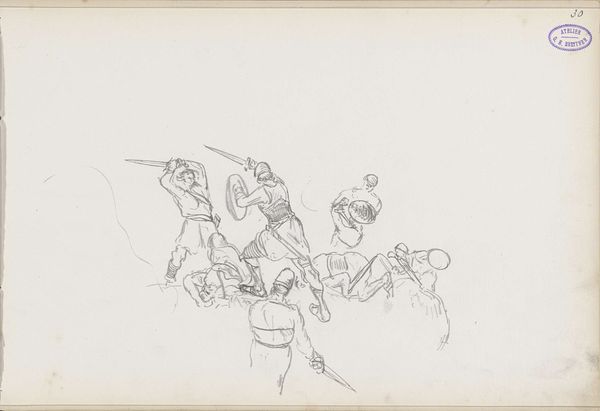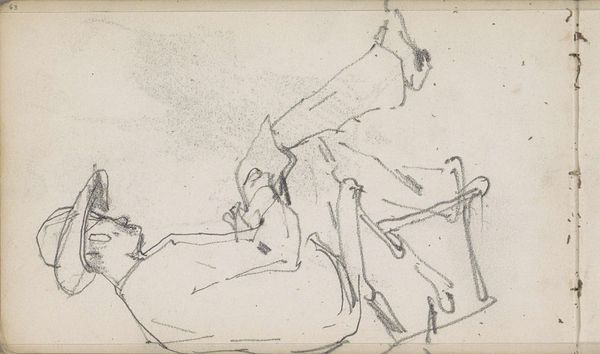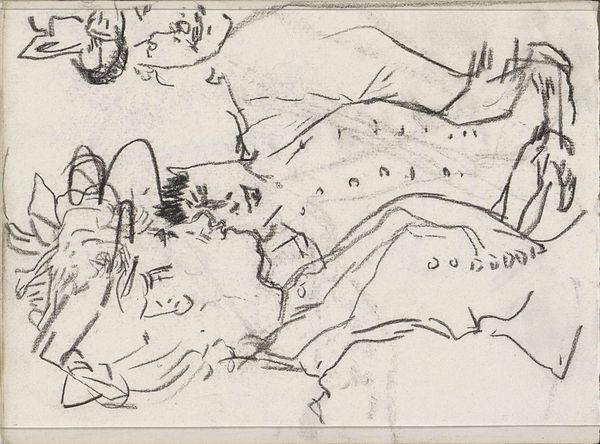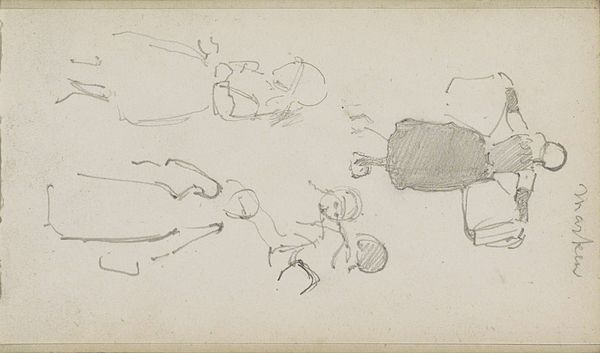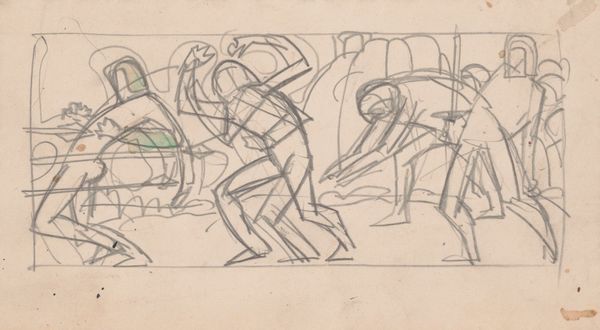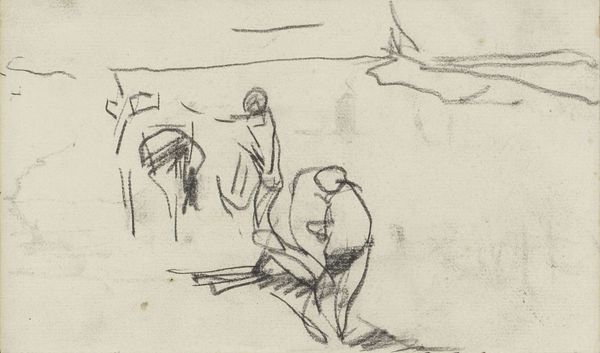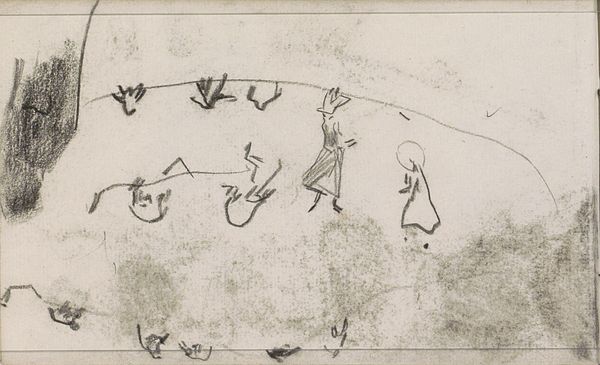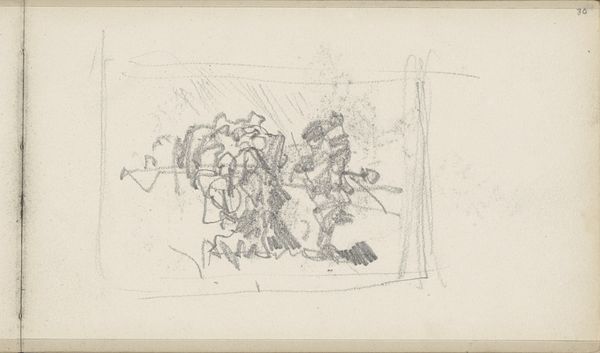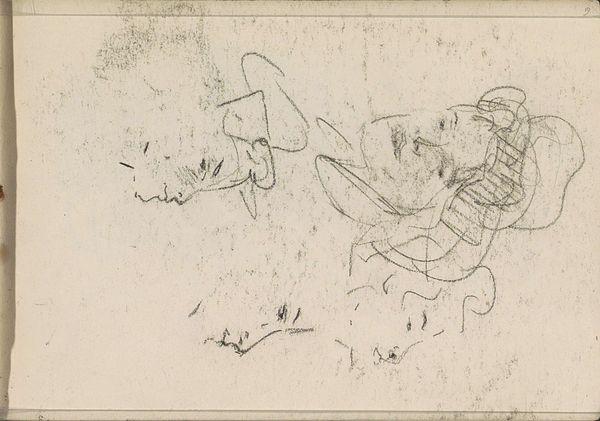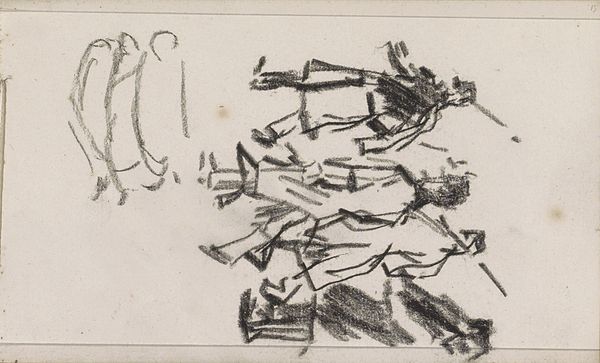
drawing, ink, pen
#
drawing
#
pen sketch
#
landscape
#
figuration
#
abstract
#
ink
#
pen
#
modernism
Copyright: Public Domain: Artvee
Editor: This is "Riders," a pen and ink drawing by Arnold Peter Weisz-Kubínčan, created sometime between 1930 and 1945. It has such a frantic energy! It feels like a fleeting dreamscape. How do you interpret the visual dynamic here? Curator: The interplay of line and form certainly establishes a dynamic tension. Note how the artist uses primarily contour lines, favoring suggestion over explicit representation. This lends itself to a sensation of movement, doesn’t it? Editor: Absolutely. The horses are almost dissolving into the landscape. Is the lack of detail intentional? Curator: Indeed. By minimizing detail, the artist privileges the fundamental visual elements, enabling us to contemplate the very essence of form and movement. Consider the rhythmic repetition of the horse’s legs, the sweeping lines that define their bodies… What feelings are conveyed? Editor: It does evoke a sense of urgency and even anxiety, perhaps reflective of the turbulent times in which it was created. The abstract shapes invite personal reflection. Curator: Precisely. This prompts viewers to engage actively in completing the image. It's the active semiotic interplay between what is presented and what is unsaid. Editor: I see. The incomplete forms push the viewer to project meaning onto the work. Curator: And this tension, this dialogue between artwork and observer, constitutes the artwork's essence. We find significance not in specific symbols, but through structural relationships of visual forms that engender affect. Editor: I now grasp how formal analysis invites understanding that transcends literal representation. It transforms our interaction. Curator: Indeed, by concentrating on its inherent components, the art unveils layers of connotation.
Comments
No comments
Be the first to comment and join the conversation on the ultimate creative platform.

